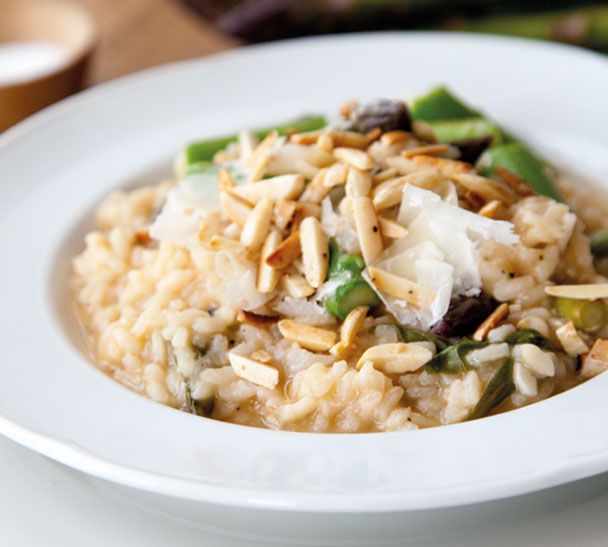
GARDENING
|
COUNTRY GARDENS
Spring Gardening Guide
By Annabel Langbein
Save Article
The First of the Spring Blossom in Dublin Bay
Spring is such an exciting time, with new growth emerging from the bare earth and buds bursting into glorious blossom. The almonds are always the first trees to blossom and their sweet, honeyed scent is utterly intoxicating to the birds and the bees. Up in the nuttery you can hardly hear yourself for the buzz of bees gathering nectar and pollen from the almond trees. We are still getting some heavy frosts which means it’s always a bit like Russian roulette in the orchard. If frost hits at bud burst and flowering, unless you protect the trees, your whole year’s crop will be lost. Some years it hits the apples other years it nabs the plums. I guess it's lucky they don’t all flower at the same time.
Up in the vege gardens I’ve still got lots of winter vegetables to harvest. Brussels sprouts, silverbeet, kale, and Tuscan kale, leeks, beetroot, and carrots have all wintered over happily, and it will be at least a month before these overwintering vegetables start to go to seed. We’ve set up some cloches outside and sown rocket seed under one and planted seedlings of spinach and lettuces in the others. Being under cover adds an extra few degrees to the soil temperature which I find gives me an extra 4–5 weeks start. Various varieties of potatoes are chitting in the shed, ready to plant out once we are past the risk of frost (the locals say when there’s no snow on Mt Roy you are safe to plant your spuds).
I’ve been busy feeding the soil with a thick layer of old broken down horse manure. I read a book about the market gardens in Paris in the 1900s which were entirely fuelled on horse manure, and I am now a total convert. It’s an excellent fertiliser, high in microbes, and brings lots of worms. You can also put fresh horse manure (which generates heat) into a trench with a little soil on top to create a warm soil base for starting seeds and seedings.
It's so tempting to run out and plant everything outside as soon as there’s a nice warm sunny day. Before you start sowing any seeds directly into the ground you need to understand that it’s not the air temperature that controls germination, it is the soil temperature. If you are planning on growing a lot of things from seed, it’s worth investing in a soil temperature gauge, especially early in the season when the soil is just starting to warm up. Planting at the optimal temperature for a specific crop is the best way to ensure a good germination rate and strong healthy seedlings, and from plant to plant this differs quite substantially. While you can plant spinach, broad beans, rocket, and onion seeds directly into the soil in early spring, I find I get a better result by starting the seed inside and then planting the seedlings outdoors, as even cold-tolerant seeds germinate better at warmer temperatures than the ground is currently. Corn, beans, chervil, dill, coriander, and fennel won’t germinate that well until the soil gets up to about 15°C. Frost-tender crops such as cucumber, zucchinis, tomatoes, pumpkin, sweet peppers, chillies, eggplant, and basil need a lot of heat to germinate — starting at 18°C, with optimal germination at around 24°C. For this reason unless you love somewhere sub-tropical, you’ll need to start the seeds of these plants in a heated greenhouse, or on a heat pad, or somewhere inside where it's sunny and warm. Don’t plant any seedlings of these plants outside until all risk of frost has passed.
Most gardens will have hot spots and cool spots. Planting in the hot spots at this time of year will give you a head start on growth. I always start my spring plantings of greens like spinach and rocket in these hotter beds, so that I can get an early harvest. Later in the season, I’ll plant these vegetables a cooler spot, as they go to seed if the soil is too hot.
Rotating the beds each season is also important otherwise you will get disease or bugs coming in. After potatoes, plant leguminous vegetables like snow peas or beans, which add nitrogen to the soil, and after that, brassicas, which will use that nitrogen.
Many people wait until Labour weekend to start planting out their summer gardens, but I always like to start earlier. There’s nothing more annoying than having everything ready to harvest just as you are about to leave for your summer holidays! Stagger your plantings every two to three weeks over the growing season and you can look forward to a delicious summer of home-grown vegetables and herbs.
Enjoy, and happy gardening!
You may also like...
Spring Recipes
Kids
Simple and nutritious meals that you'll feel good about feeding your family.

Special Occasions
Celebrate the moments that matter with unforgettably delicious meals.

Potluck
Bring together the people you love with easy, flavourful dishes designed to be shared.

Dinner
Discover a global pantry of flavours with simple, satisfying recipes that work, every time.






